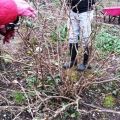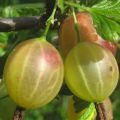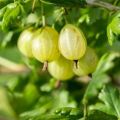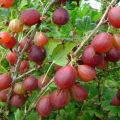Description and characteristics of the consul gooseberry variety, cultivation and care
Every year summer residents strive to increase the number of fruits they receive, choosing new varieties and conditions for their maintenance. Among the gooseberries there is a wide variety of species, which differ in the amount of harvest, ease of cultivation, and the duration of ripening. The Consul gooseberry variety (also called Senator) is popular, it produces many sweet fruits that are easy to pick due to the absence of thorns on the bush.
Content
- 1 History of culture breeding
- 2 General description of the consul variety
- 3 Advantages and disadvantages of the variety
- 4 In which regions can the Senator variety be planted
- 5 The nuances of planting varieties
- 6 Site and seedling selection
- 7 Timing and step-by-step instructions for disembarkation
- 8 Features of gooseberry care
History of culture breeding
The variety was bred by breeders recently, in the late 90s, by crossing the African and Chelyabinsk green varieties. The goal was to obtain a completely new frost-resistant variety. The result of hatching was successful, agricultural technicians began to actively engage in cultivation, receiving a considerable amount of sweet fruits.
General description of the consul variety
Description of the gooseberry variety Consul:
- The bushes grow thick, vigorous. In length they reach a mark of up to two meters. The branches have a bright green tint. In the first year, a small number of single thorns are formed on the shoots. Subsequently, they disappear and no longer appear.
- Shoots of medium thickness, brown.
- Inflorescences are one-flowered and two-flowered.
- The sepals are bright pink.
- Large-fruited gooseberry.
- The sheet has deep cuts in a matte green shade. In total, the leaf has five lobes, of which the middle lobe is the largest. The side ones are small, widely spaced from each other.
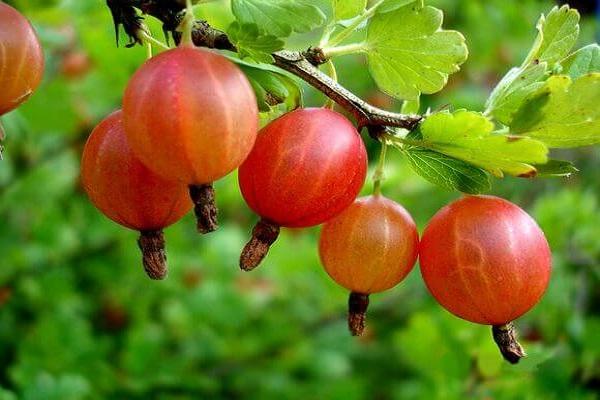
Productivity and fruits
Senator fruits are large in size. The weight of one berry can reach six grams.
Under favorable growth conditions in the first year, you can collect up to 3 kg of ripe berries from the bush. In subsequent years, the number of fruits increases to 6 kilograms.
Gooseberry Senator has a round shape, red hue, and when ripe, they turn reddish-black. The skin of the fruit is thin. Fruits are medium-grained, sweet taste.
Bush and root system
The bushes are tall and have no thorns, which is very convenient for harvesting. The root system of the bush is closed.
Frost resistance
Senator belongs to frost-resistant plants that can withstand cold temperatures down to -30 degrees, which allows you to grow the plant in severe weather conditions and get tasty fruits annually.
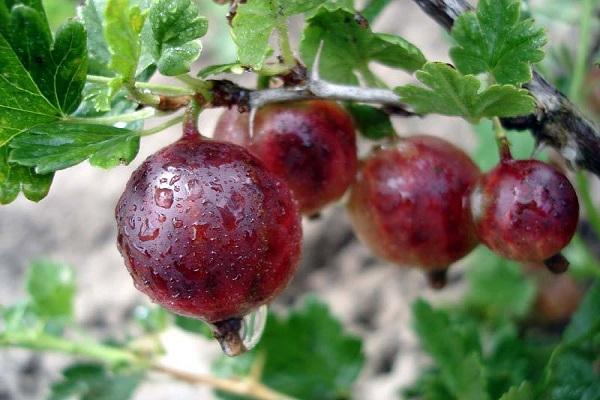
What diseases and pests is prone to
The plant is resistant to most common diseases and pests due to its strong immunity. Occasionally, on dry days, an attack by a moth or aphid is possible.
The most common gooseberry diseases are powdery mildew, sawfly and septoria. To avoid this, it is necessary to carry out periodic processing.
Advantages and disadvantages of the variety
The advantages of the variety are:
- Compared to other varieties, the Senator gives a much higher yield.
- It is a self-pollinated variety.
- Shipless view.
- Delicious fruits.
- Frost resistant.
- Drought tolerant.
- Requires little maintenance.
- Resistant to diseases and pest attacks.
Among the shortcomings, some note:
- Difficulty in transportation.
- Does not tolerate windy places.

In which regions can the Senator variety be planted
The variety, due to its unpretentiousness to temperature conditions, is grown in many regions: the Urals, the Far East, Siberia, and the southern regions. It can grow in mild temperatures, hot temperatures and cold winters.
The nuances of planting varieties
Do not grow gooseberries in places where currants or raspberries used to grow, as the soil after the bushes is scarce.
Growing rules are simple, even a novice gardener can handle it. The only thing to consider before planting is the choice of a bright spot. It is important that the sun's rays fall on the bush.

Site and seedling selection
In order for the gooseberry to start growing actively and bearing fruit on time, you need to choose a good seedling:
- The recommended age of the bush is 2 years.
- The presence of shoots should be at least three, the length of which is about 25 centimeters.
- The bush should sit tightly in the planting container, from which the roots should not stick out.
Important! You cannot buy seedlings in untested places in order to avoid acquiring a diseased plant.
The landing site is chosen on the south side. Gooseberry bushes love sunlight. The plot must be flat. It is important to consider that bushes are sensitive to strong winds.
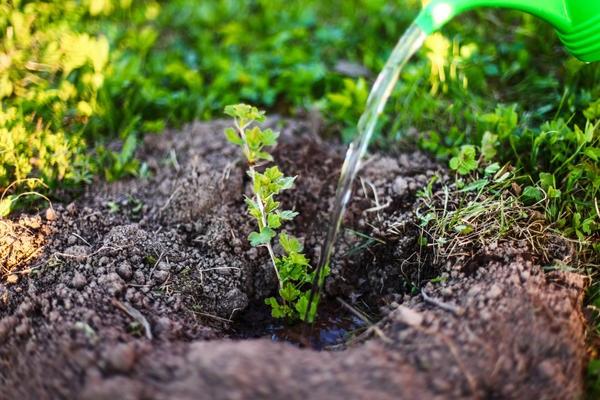
Timing and step-by-step instructions for disembarkation
Senator gooseberries are planted in autumn or spring. In order for the bush to take root, you need to follow the scheme:
- Before planting, soak the sprout for a couple of hours in a growth stimulator (sold in specialized stores).
- Dig a shallow hole 35-50 cm deep.
- Put humus at the bottom.
- Fertilize with 45 grams of potassium salt.
- Leave the hole to soak in fertilizer for a day.
- Remove dried branches from the plant before planting.
- Put the seedling into the finished hole at a right angle, cover with earth, pour abundantly with water (about 5 liters).
After planting the gooseberry, you need to cut off the shoots a little (3-5 cm).
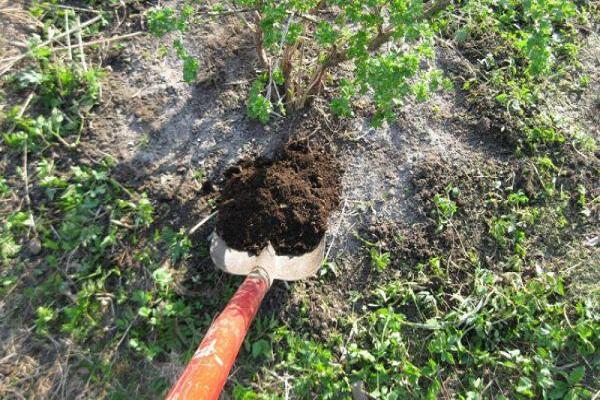
Features of gooseberry care
Gooseberries take root well in any soil, but loamy is preferable for it:
- For a plant, regular watering and saturation with nutrients is important.
- We must not forget to cut off the shoots, this stimulates more active growth of the bush.
- Periodically, cleaning of weeds is required at the place of growth of the bush.
- It is advisable to spray the leaves every summer month with a remedy for pests and diseases, despite the variety's resistance to them.
Watering the plant correctly
You do not need to fill the shrub daily. During the summer period, three abundant watering will be enough:
- During flowering.
- During the ripening of the fruit.
- At the beginning of the autumn period.
Important! To assimilate moisture after watering, loosening of the soil is required. Irrigation time is either early morning or late evening.
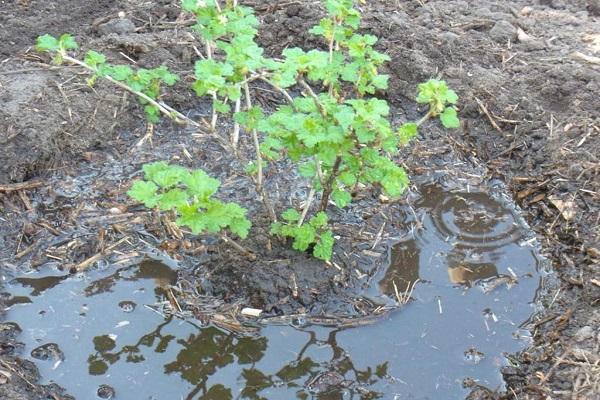
Garter and bush formation
So that the bush does not fall and crumble, it must be formed at the very beginning of the landing. This is done by tying to the installed supports. Dig in the columns around the plant and tie the overgrown branches to them, joke off the extra shoots that have gone far beyond the boundaries of the supporting columns.
Hilling
The gooseberry prefers loosened soil, so don't forget to huddle the plant. Dig the earth around the bush to a depth of about 20 centimeters. Hilling frequency:
- Spring, as soon as the snow has melted.
- Monthly from the first month of summer to the second month of autumn.

Top dressing of gooseberries
Like any plant, the Consul needs fertilizers for active growth. Top dressing is performed according to the algorithm:
- The first feeding is carried out during the appearance of the leaves. A solution of 15 grams of urea + 30 grams of nitrophoska is perfect for her. Stir the substances in a bucket of water.
- When the gooseberry has bloomed, you need to feed it a second time with 30 grams of potassium sulfate and 60 grams of Yagodka fertilizer diluted in two buckets of water.
- During the appearance of fruits. In 30 liters of water, dilute 40 grams of nitrophoska, 80 grams of potassium humate.
Pour top dressing into the soil without getting on the leaves.

Preparing bushes for winter
Gooseberry Consul safely tolerates even the coldest winters if the culture is well prepared for the cold. Usually, the branches of the bush are alternately applied to the ground and fixed with covering material (sold in agricultural stores) or covered with a layer of straw 15 centimeters thick.
This method will protect the plant from freezing.


